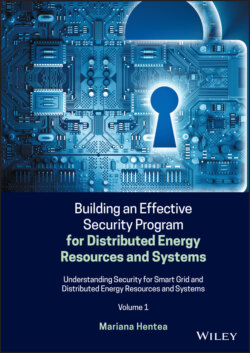Читать книгу Building an Effective Security Program for Distributed Energy Resources and Systems - Mariana Hentea - Страница 55
1.8.3 Smart Grid Standards
ОглавлениеCollaboration on standards for the Smart Grid is a must, and the power industry needs to embrace the work the standards organizations are doing. Participation is encouraged; but more important are the conversations that occur at appropriate levels of abstraction. It is also important for all standards organizations to work at the level that suits the application. For example, when specifying a protocol, the bits and bytes are important; however, when specifying a business integration framework, the bits and bytes are less important than workflow, which takes precedence. This is a delicate balance but one that the industry will need to develop and embrace [Vos 2009].
In the Smart Grid, the evidence of the essential role of standards is growing. A Congressional Research Service report, for example, cited the ongoing deployment of smart meters as an area in need of widely accepted standards. The US investment in smart meters predicted to be at least $40 billion for a million new smart meters over a period of five years [Kaplan 2009], [ON World 2009], [WH 2016].
The principle of using open standards is highly encouraged to support interoperability and therefore help popularize new technologies [Microsoft 2002]. An open standard is a standard that is publicly available and has various rights to use associated with it. It may also include an explanation of how it was designed and why (e.g. open process). There is no single definition, and interpretations vary with usage [Open Standard]. Among known standards organizations, only the IETF and ITU‐T explicitly refer to their standards as open standards that allow reasonable and nondiscriminatory patent licensing fee requirements. However, those in the open‐source software community think that an open standard is only open if it can be freely adopted, implemented, and extended.
